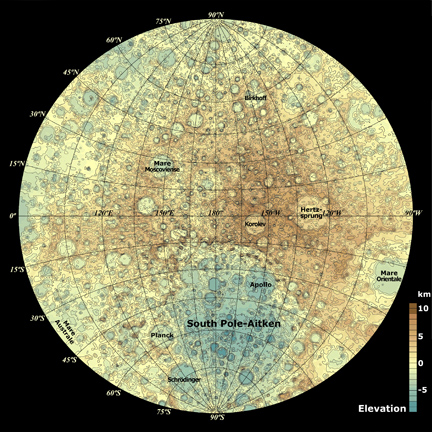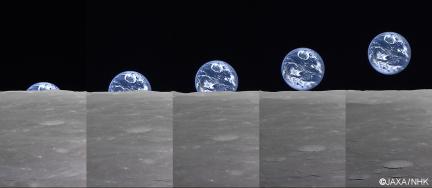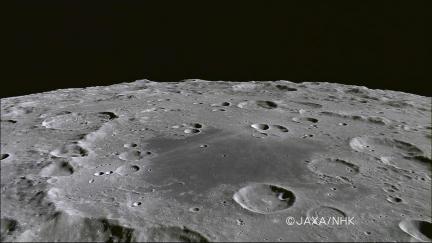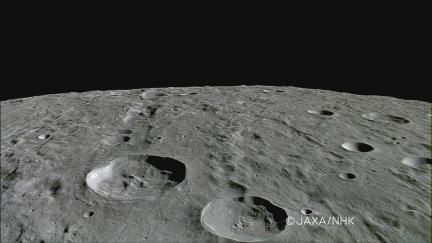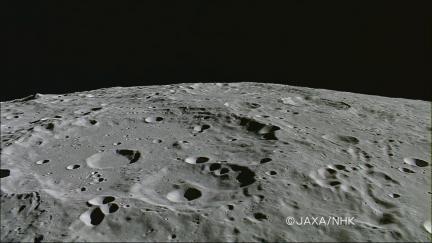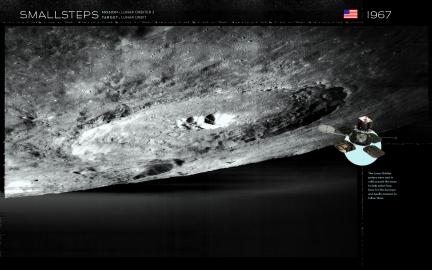 If happen to come to own one of these bad boys from the late 60’s early 70’s you are going to need this owners manual. The original owners of these models rarely have this on-hand. If you are in the market, beware of any models from the 13 line since that model had a well-known faulty oxygen tank that is likely to scrub any potential trips to the Lunar surface you may have planned. Get it from Haynes online.
If happen to come to own one of these bad boys from the late 60’s early 70’s you are going to need this owners manual. The original owners of these models rarely have this on-hand. If you are in the market, beware of any models from the 13 line since that model had a well-known faulty oxygen tank that is likely to scrub any potential trips to the Lunar surface you may have planned. Get it from Haynes online.
Earth Ring and the End of Kaguya
 The Kaguya moon orbiter has reached the end of its mission and on June 10th the spacecraft executed an uncontrolled impact into the surface of the moon. The impact was captured from ground-based observation (at left) and is the small round flash seen dead-center.
The Kaguya moon orbiter has reached the end of its mission and on June 10th the spacecraft executed an uncontrolled impact into the surface of the moon. The impact was captured from ground-based observation (at left) and is the small round flash seen dead-center.
One of the mission’s final masterpeices of hi-def video was capturing an Earth eclipse of the Sun for the first time from the Moon. The image at top shows the details in 8 key frames and the actual video can be seen here on youTube.
I’m the Moon
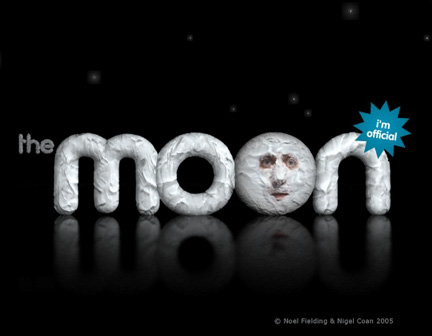 The genius that is Noel Fielding and Julian Barratt has this intriguing recurring character that comes at various times throughout its television show named “The Mighty Boosh”. Its is… “The Moon”. The Moon is an odd character that often injects an observation pretty much independent of anything related to the storyline in betwen scenes. Essentially it is Noel Fielding’s face covered in some kind of cream ala Georges Meliès classic “A Trip to the Moon” and is always, always funny.
The genius that is Noel Fielding and Julian Barratt has this intriguing recurring character that comes at various times throughout its television show named “The Mighty Boosh”. Its is… “The Moon”. The Moon is an odd character that often injects an observation pretty much independent of anything related to the storyline in betwen scenes. Essentially it is Noel Fielding’s face covered in some kind of cream ala Georges Meliès classic “A Trip to the Moon” and is always, always funny.
iPhone Skins Featured on feulyourcreativity.com
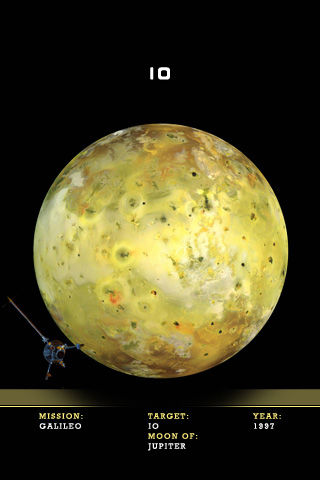 Not to re-post old material, but our iPhone planetary skins were recently posted to fuelyourcreativity.com for free download. So I thought I would just remind everyone and maybe direct a little traffic love their way.
Not to re-post old material, but our iPhone planetary skins were recently posted to fuelyourcreativity.com for free download. So I thought I would just remind everyone and maybe direct a little traffic love their way.
Moon Restored
 The Lunar Orbiter Image Recovery Project has been working to restore historic images from the Lunar Orbiter missions which were launched during the years 1966 and 67. These images have been remastered from the original data sets with today’s computing technology resulting in not only reducing the noise, but brought out details that were not possible with the technology available when they were taken. The above image is just a section of the original (seen below) and is also a work-in-progress so you will still notice the striping and other anomalies.
The Lunar Orbiter Image Recovery Project has been working to restore historic images from the Lunar Orbiter missions which were launched during the years 1966 and 67. These images have been remastered from the original data sets with today’s computing technology resulting in not only reducing the noise, but brought out details that were not possible with the technology available when they were taken. The above image is just a section of the original (seen below) and is also a work-in-progress so you will still notice the striping and other anomalies.
Although, as a graphic designer I have to say the original has it’s charm too. I like the distortion, noise and various odd anomalies of these historic missions so much that it led to my making the Smallsteps series of wallpapers last year. Maybe this new LOIRP image needs to be added to that collection… but I would probably stick with the original for the effect. I love the work they are doing, but I also like that you can see the history in these old crusty images too.
Moon Tube
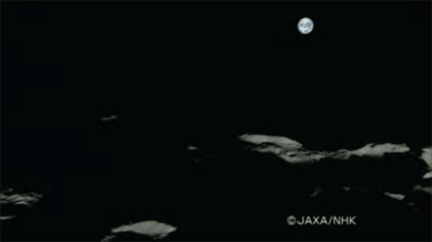 JAXA has set up its Kaguya YouTube page. Lots of moon videos like the one above, which has been sped up and converted to a gif here (showing only about 1 of every 20 frames). See the full animation here.
JAXA has set up its Kaguya YouTube page. Lots of moon videos like the one above, which has been sped up and converted to a gif here (showing only about 1 of every 20 frames). See the full animation here.
Lunar Elevation Map from Kaguya Data
Click either image below to load the 4MB high-res tiff file from JAXA. Your will need to be able to read tiff files to view in the browser or click here to download and save the file (right click on the link and choose “save file”).
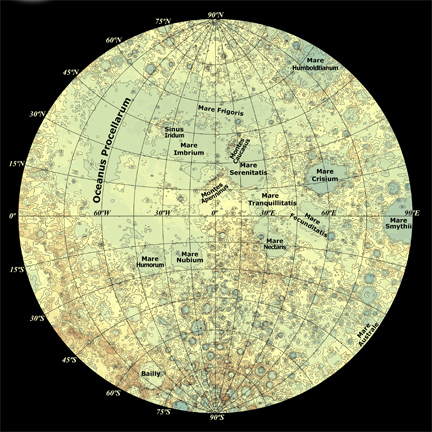
Near Side
Far (unseen) Side
One More Earthrise
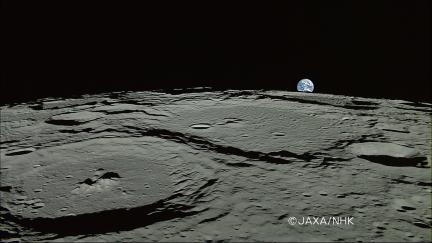 Also from JAXA.
Also from JAXA.
Its Just Pretty: Earthrise as Seen by Kaguya
Earth and Moon Seen from Mars
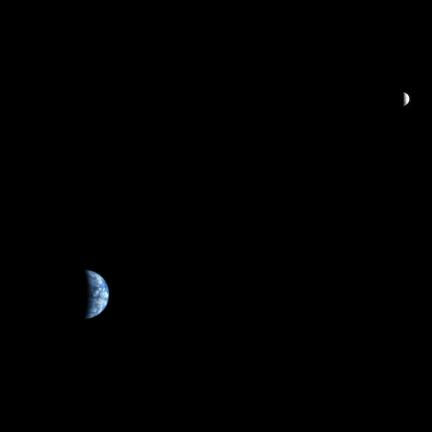 This is an image of Earth and the moon acquired by the HiRISE camera on NASA's Mars Reconnaissance Orbiter which is in orbit around Mars. The distance from MRO to Earth at the time the image was taken was 142 million kilometers (88 million miles). Hard to image such details could be drawn out in an image taken from such a distance as that.
This is an image of Earth and the moon acquired by the HiRISE camera on NASA's Mars Reconnaissance Orbiter which is in orbit around Mars. The distance from MRO to Earth at the time the image was taken was 142 million kilometers (88 million miles). Hard to image such details could be drawn out in an image taken from such a distance as that.
A similar image of Jupiter was also acquired by MRO some months ago.
Japan’s Kaguya has Hi-Def!
Some of these Moon (Luna) images have been available for a while on the Kaguya website, but just never got around to posting additional images beyond this Earthrise release from a while back.
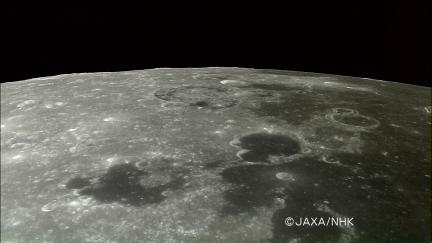
Highlights for 2008
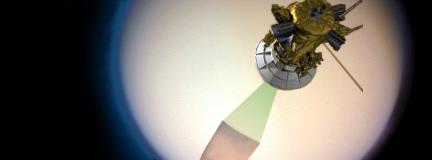 Cassini takes a pass at Titan on February 22 (already having made a pass this year on January 5th).
Cassini takes a pass at Titan on February 22 (already having made a pass this year on January 5th).

Soon after Titan, Cassini performs a truly unexpected maneuver and flies directly through the plumes of Enceladus on March 12th. This is a somewhat risky task for the probe as the particles it will surely encounter may pose some kind of impact threat to the spacecraft. Mission planners expect the risk to be low as they intend to turn the spacecraft around and let the less delicate side of Cassini bear the brunt of the material and photograph the geysers as it moves away from Enceladus. It should make for some of the most exciting planetary science planned for this year.

Cassini has another go at Titan on March 25.

Yup – you guessed it. Cassini at Titan again on May 12th.
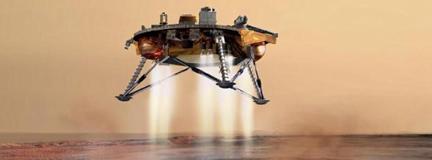
The Phoenix lander arrives at Mars on May 25th and (hopefully) makes good on the failure of the Mars Polar Lander. It will be the first time a probe will attempt a landing on the Martian pole and will conduct a series of experiments looking for the existence of water ice.

You can never have too much of a good thing. Cassini at Titan again on May 28th as well as July 31.
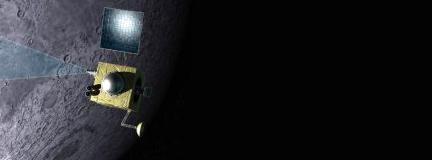
Chandrayaan becomes India’s first planetary probe as it leaves for the moon in Early July (was April).
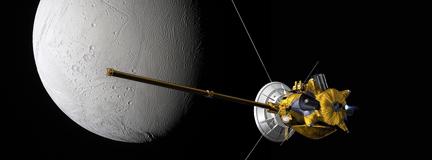
The extended Cassini mission has made Enceladus a prime target of investigation and the new encounters begin on Aug 11th and comes within 54km of the surface.
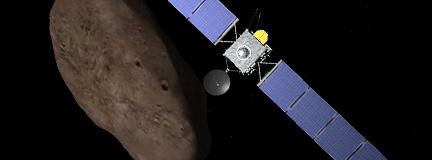
Rosetta still on its way for an encounter with Comet 67P/Churyumov-Gerasimenko in 2014, will make a close pass at an asteroid named 2867 Steins on Sept 5th at a distance of only 1700 km. Steins is a small asteroid measuring only a few kilometers in size and the craft will be traveling at a relatively slow speed which should allow for some good resolution images to be acquired during the encounter.
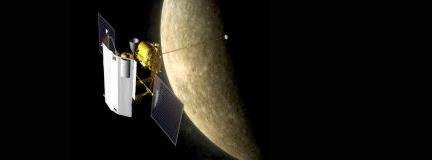
Messenger (having just completed the first encounter in 33 years this past week) has another go at Mercury on Oct 6th and flies past more uncharted territory on its way to eventual orbit insertion in 2011.

Two more close flybys of the Saturnian moon Enceladus on Oct 9 and Oct 31. The first at hair-raising distance of 25km and the second around a more reasonable 200km.
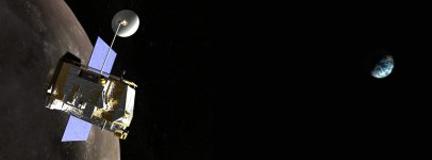
In an effort to recognize the International Lunar Decade (and intended manned Lunar missions within 15 years), the United States returns to the moon with the Lunar Reconnaissance Orbiter on Nov 3rd. It is expected to begin its scientific goals only 3 days after launch and is expected to look for possible deposits of water ice in permanently shadowed craters near the Lunar poles.

And finally more Titan flybys on Nov 3, Nov 19, Dec 5 and Dec 21.
All this is in addition to the ongoing work of Opportunity and Spirit on the surface of Mars. Mars Express and Mars Reconnaissance in orbit around Mars. Cassini’s non-targeted continuing tour of other icy Saturnian moons. And who knows, maybe we will see more than 2 or 3 reports coming from the ever quiet Venus Express mission currently at Venus.
Sadly, some very exciting missions will be quietly traveling en route to their targets and are not expected to be heard from in 08 like the Dawn Mission to the Asteroid Belt, New Horizons mission to Pluto/Charon, the newly re-targeted Deep Impact mission (now known as Epoxi) as well as Stardust now on its way to a follow-up visit to Tempel 1 the comet that was smacked by Deep Impact in 2005.
Smallsteps Wallpaper: Lunar Orbiter 3
Smallsteps Wallpaper: Lunar Orbiter 1
In August 1966 NASA began the Lunar Orbiter series of missions that were intended to get up-close images of smooth areas of the moon suitable for landing both Surveyor unmanned lander probes as well as the eventual manned missions of Apollo. Note that these missions had only begun 3 short years before the successful Apollo 11 mission that saw mankind take its first steps onto the surface of another world… now that is some turn-around time! Lunar Orbiter 1 actually took place while the Surveyor series of missions had already begun. This would suggest that some of the data obtained from the Lunar Orbiter probes were collected and used immediately in the execution of Surveyor missions.
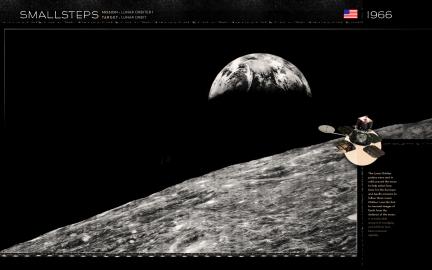
This first Lunar Orbiter mission is credited for returning the first 2 images of Earth as seen from the distance of the moon. Most people refer to these kinds of images as “Earthrise” images, although that description is incorrect in the traditional sense of the word. Since the same side of the moon always faces Earth, an Earthrise is only possible in a Lunar orbiting spacecraft that is in effect chasing the Earth. Down on the surface of the moon… if you can see Earth in the sky, then you will always see Earth in the sky. It will always be in the same place, at the same size and at all times of the Lunar day.
Ranger IX, Camera A
A while back wanderingspace posted 2 great animations of the Mariner flybys of Mars. They had a great nickelodeon feel to them and are two of the best posts on this blog (in our opinion). So when Emily Lackdawalla posted recently on the first “earthrise” as seen from a probe in orbit around the moon – she linked to this great database of moon shot mission images from the 60’s. Glimpsing at these collections, it was clear that there existed the same potential for another nickelodeon style animation of a trip to the moon.
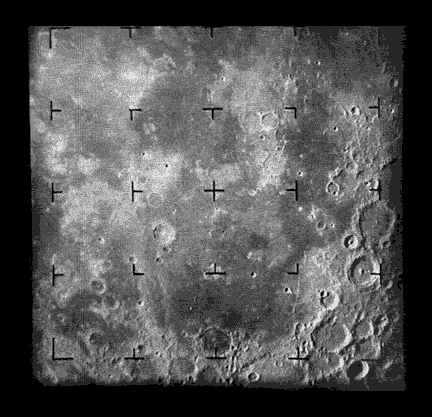
The mission shown above is Ranger IX and there are many more potential animations that can be made from other Ranger missions or from the Lunar Orbiter series of images. Maybe one day.
Sorry for the huge file size… about 1M.
Earthrise as Seen by Kaguya
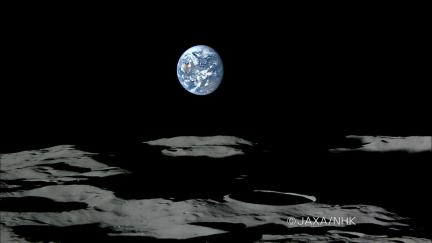 Thank you JAXA. Last time we saw something like this was round about 1974… If you want a peek at one of the HiDef movies being shot by Kaguya see this link here.
Thank you JAXA. Last time we saw something like this was round about 1974… If you want a peek at one of the HiDef movies being shot by Kaguya see this link here.
The iPhone Set 01: Bodies of Major Interest
 If I am going to keep making these things… I’d be a fool to not include a set for the Apple iPhone. Coincidentally, when you purchase your iPhone and do not yet have a phone service, the phone displays a full-disc image of the Earth pretty much displayed exactly as these do when uploaded to your iPhone. So in the spirit of continuity, you can now opt instead to have Mercury, Venus, Earth, The Moon (Luna), Mars, Jupiter, Io, Europa, Ganymede, Callisto, Saturn, Enceladus, Titan, Iapetus, Hyperion, Uranus, Miranda, Neptune or Triton grace your screen instead of the default Earth.
If I am going to keep making these things… I’d be a fool to not include a set for the Apple iPhone. Coincidentally, when you purchase your iPhone and do not yet have a phone service, the phone displays a full-disc image of the Earth pretty much displayed exactly as these do when uploaded to your iPhone. So in the spirit of continuity, you can now opt instead to have Mercury, Venus, Earth, The Moon (Luna), Mars, Jupiter, Io, Europa, Ganymede, Callisto, Saturn, Enceladus, Titan, Iapetus, Hyperion, Uranus, Miranda, Neptune or Triton grace your screen instead of the default Earth.
The easiest way to install wallpapers to your iPhone is to make a special set in iPhoto and simply drag all the files to that folder. Then in iTunes have your iPhone sync that folder to your photos collection. After that it is as simple as opening the “Photos” area of your iPhone. Go to your new folder of images and open whichever image you want. Then tap on the image just once and assign it as a wallpaper using the “Use as Wallpaper” button in the lower left corner of the screen.
If you have a PC I have no idea in hell how the hell you get images into your iPhone. I would buy a Mac… you have an iPhone and use iTunes… you are half-way there.
For a version of these with no graphics see this link.
Japan’s Kaguya: Orbiting and Releasing Probes
Always interesting to see parts of a probe set against the celestial body it is observing. Unlike images that only include the target, these remind you of the presence of a probe or observer. It illustrates a clear difference between seeing these bodies from a great distance (say from a telescope like Hubble) versus knowing that these views were taken very far away from us here on Earth and in the proximity of a very alien world.
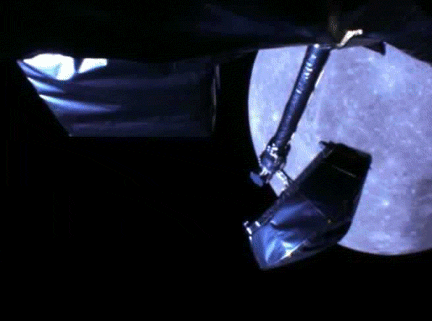
The mission Kaguya is Japan’s contribution to the International Lunar Decade which has only just begun and might hopefully end with some form of manned mission by or around 2017.
The mission has thus far released one of it’s two smaller probes (Rstar) which will independently orbit the moon and the second smaller probe (Vrad) will be set in orbit sometime today. The mission’s main objective is to help solve some of the mysteries of the moon’s origin as well as acquire a more complete understanding as to the moon’s usefulness to the human race and it’s potential role in future space exploration.
Smallsteps Wallpaper: Surveyor 1
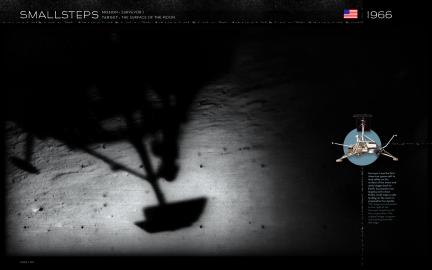 Look at the date on this mission. It’s 1966… 3 years before the Apollo 11 manned landing on the moon. It shows you what we as a species could really do had we the initiative to do it. Just 3 years after landing the first unmanned probe on the surface of the moon… we were ready to send people. That would almost be like sending men to Mars just a few years after Viking landed in 1976. Okay… it is much further away than the moon and many other technical difficulties as well. So lets say that it would been like sending people to Mars 10 years after Viking. That would be 1986 and here we are 20 years after that saying it will still take another 15.
Look at the date on this mission. It’s 1966… 3 years before the Apollo 11 manned landing on the moon. It shows you what we as a species could really do had we the initiative to do it. Just 3 years after landing the first unmanned probe on the surface of the moon… we were ready to send people. That would almost be like sending men to Mars just a few years after Viking landed in 1976. Okay… it is much further away than the moon and many other technical difficulties as well. So lets say that it would been like sending people to Mars 10 years after Viking. That would be 1986 and here we are 20 years after that saying it will still take another 15.
The Surveyor craft was sent to the surface of the moon largely just to prove that we could do it. It was doing what its name suggested… surveying places for Apollo to plant a few flags.
In the Shadow of the Moon Trailer
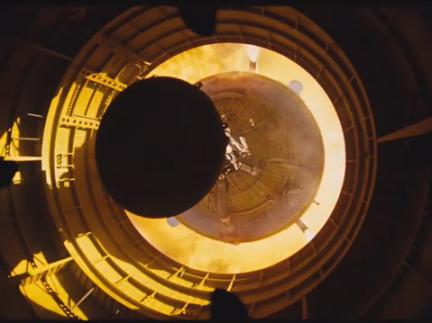 The Ron Howard documentary “In the Shadow of the Moon”, came to theaters on September 7th. How did I miss this? See the trailer here.
The Ron Howard documentary “In the Shadow of the Moon”, came to theaters on September 7th. How did I miss this? See the trailer here.


